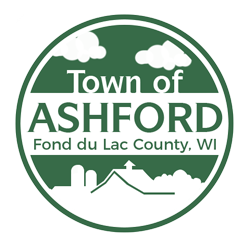Do the right thing for state’s infrastructure
By BRUCE SPEIGHT
Last weekend, Gov. Jim Doyle attended a landmark meeting of the
National Governors Association in Washington. The governors came
together to discuss building new transportation systems and electrical
power grids. But it was the spending of federal stimulus funding that
became the talk of the meeting and the focus of nationwide press
coverage. Doyle will face key decisions about how best to use the
federal funds.
The stakes for the people of Wisconsin could not be higher. Decades of
ill-advised spending on new highway construction have left the state’s
transportation system in critical condition. According to the U.S.
Department of Transportation, 1,302 bridges in Wisconsin are
“structurally deficient” and could pose a safety hazard, and 9.4% of
our roads are in “poor” condition. In addition, $630 million in
ready-to-go bus and rail projects remain unfunded.
The funding provided by the American Recovery and Reinvestment Act
would enable our state to make up for lost time, but only if the
political will exists to spend money where it is needed most.
Pennsylvania Gov. Edward Rendell, this year’s NGA chair, sent a
message to all governors when he stated on national television that
Pennsylvania “can have people working by May, because we’re going to
fix it first” and that he would focus on “deficient bridges” and
“miles of roads to be resurfaced.”
He’s right about the benefits of fix-it-first over new highway
construction. A recent study, using government data, found that
construction projects that repair deteriorating roads and bridges can
be started more quickly and would create 9% more jobs than new highway
projects. The study also found that investment in public
transportation creates about 19% more jobs than building new
highways.
Doyle left the NGA meeting to visit Spain to learn more about the
benefits of high-speed rail and the potential to put Wisconsin
manufacturers back to work building high-speed trains here. We applaud
the governor for this leadership. At the same time, the governor has
proposed that roughly half of the first $300 million in Recovery Act
transportation dollars be spent on new highway capacity. When roads
and bridges are crumbling and our dependence on oil threatens our
environment, economy and national security, we can’t afford to make
the same old decisions.
There’s little doubt that building new and wider highways would create
jobs. However, it also would increase our oil dependence, greenhouse
gas emissions, vulnerability to gas price hikes and traffic
congestion.
Repairing roads also saves everyone money immediately. According to
economist Robert Frank: “One-hundred-and-twenty-dollars-a-year damage
per year per vehicle. The potholes in the roads do more damage to
vehicles each year than it would cost to fix them. That’s just
ridiculous that we don’t fix them.”
In other words, not all transportation investments are created equal.
Using stimulus funds to expand public transit and repair existing
roads and bridges not only would create more jobs in less time but
also would give the state the best long-term return on the investment.
When reductions in greenhouse gas pollution, commute times, traffic
congestion, household expenses and energy use are added to the number
of jobs created, spending on fix-it-first and public transit wins
hands down.
A recent announcement from the Obama administration echoes these ideas
and should empower our state officials to adopt a bolder vision. When
the Recovery Act was signed last week, U.S. Transportation Secretary
Ray LaHood, a Republican, who hardly can be characterized as an
extremist, said, “We will emphasize sustainable investment and focus
our policies on the people, businesses and communities who use the
transportation systems. And we will focus on the quality of our
environment. We will build and restore our transportation foundations
until the American dream is returned.”
The secretary’s message and the recent NGA meeting pave the way for
Doyle to use the new federal funding to help build a world-class,
21st-century transportation system in Wisconsin.
Bruce Speight is an advocate with the Wisconsin Public Interest
Research Group, a statewide nonprofit, nonpartisan public interest
advocacy organization.
